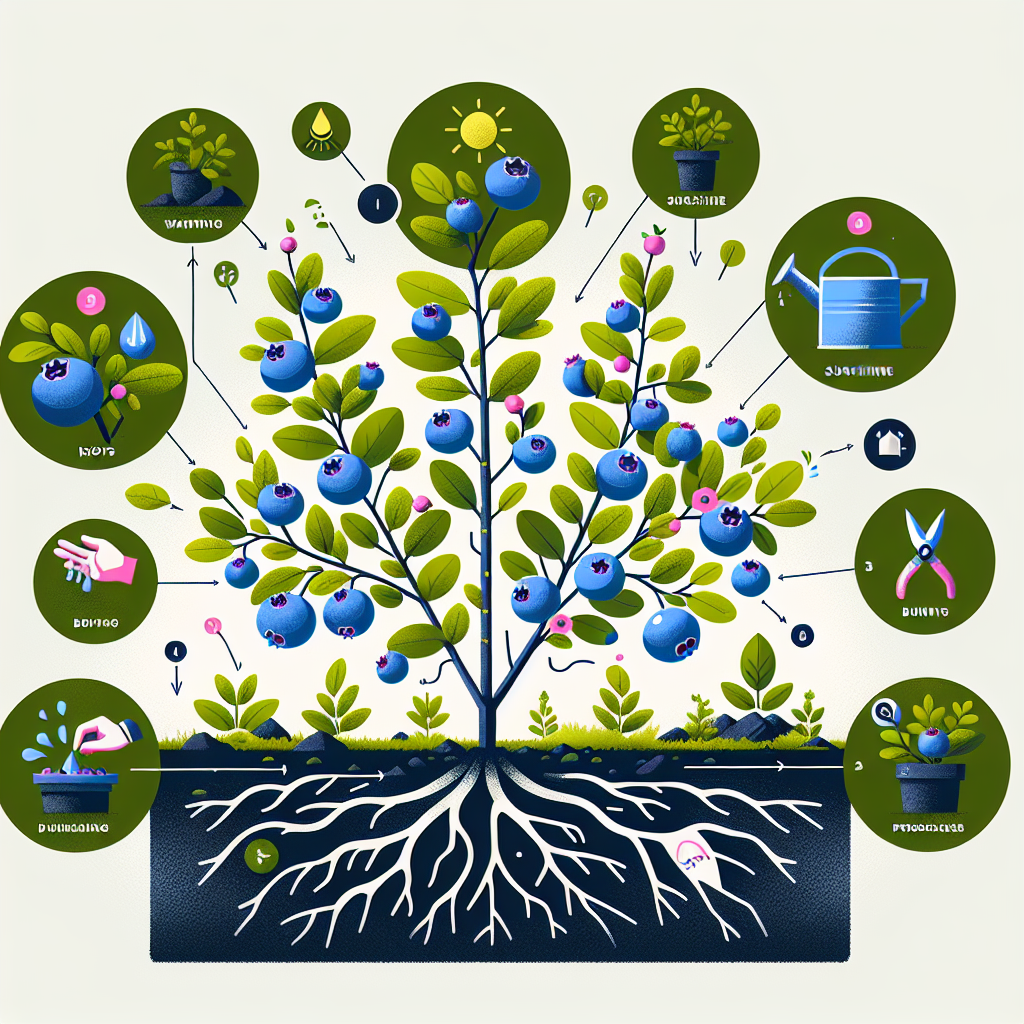
How to care for blueberry plants
How to Care for Blueberry Plants: A Comprehensive Guide
Blueberry plants are beloved for their sweet, nutritious berries and their stunning foliage. Whether you’re a seasoned gardener or just starting out, knowing how to care for blueberry plants properly can help ensure a bountiful harvest. This guide breaks down essential care tips, from planting to pruning, and everything in between to keep your blueberry plants healthy and productive.
Choosing the Right Blueberry Varieties
Before diving into care techniques, it’s crucial to select the right variety of blueberry plants suited to your climate and space. There are three main types:
- Highbush Blueberries: Common in commercial production, they thrive in cooler climates (Zones 4-7) and can grow up to 6-12 feet tall.
- Rabbiteye Blueberries: Best for warmer southern regions (Zones 7-9), they are more drought-resistant and can reach up to 8-10 feet in height.
- Southern Highbush Blueberries: A hybrid of highbush and rabbiteye, these are suitable for milder climates (Zones 5-10) and tend to have an earlier harvest.
Consider your local climate when selecting a variety to ensure a successful gardening experience.
Site Selection and Soil Preparation
Blueberry plants require specific soil conditions to thrive. Here’s how to prepare the perfect site:
- Choose the Right Location: Blueberries prefer full sun, so pick a spot that gets at least 6-8 hours of direct sunlight daily.
- Check Soil pH: Aim for a soil pH of 4.5 to 5.5. Blueberries thrive in acidic soil, so if your soil is more alkaline, consider using raised beds or containers with a suitable potting mix.
- Improve Soil Drainage: Blueberries dislike standing water. If your soil is heavy clay, amend it with organic matter or sharp sand to improve drainage.
Planting Your Blueberry Plants
Once you’ve chosen your plant variety, prepared the site, and improved the soil, it’s time to plant your blueberries:
- Spacing: Space plants 4-5 feet apart to allow for proper growth and airflow.
- Depth: Dig a hole twice the width of the root ball and just as deep. Position the plant so that the crown is level with the soil surface.
- Fill and Water: Backfill the hole with soil and pack it gently. Water thoroughly to settle the soil around the roots.
Watering Needs
Proper watering is essential during the growing season. Here are some tips for managing water effectively:
Blueberry plants need consistent moisture, especially while they’re establishing roots. Consider the following guidelines:
- Frequency: Water your plants deeply once a week during dry spells, ensuring that the top 1-2 inches of soil remain moist but not soggy.
- Mulching: Apply a 2-3 inch layer of mulch to conserve moisture, regulate soil temperature, and suppress weeds.
- Irrigation System: If possible, install a drip irrigation system for consistent moisture without waterlogging the roots.
Fertilizing Blueberry Plants
Proper nutrition is critical for healthy plants and a fruitful harvest. Follow these fertilizing tips:
- Timing: Fertilize in early spring as new growth begins and again after the harvest in summer.
- Type: Use fertilizers designed for acid-loving plants, such as those containing ammonium sulfate, or organic options like fish emulsion.
- Application: Follow the package instructions for application rates based on the age and size of your plants.
Pest and Disease Management
Protecting your blueberry plants from pests and diseases is essential for achieving a prosperous harvest. Keep an eye out for:
- Common Pests: Aphids, spider mites, and fruit flies.
- Diseases: Powdery mildew, stem blight, and root rot.
Here are some management tips:
- Regular Monitoring: Check plants frequently for signs of pests or disease.
- Natural Predators: Introduce beneficial insects like ladybugs or lacewings to control pests organically.
- Fungicides: Apply as a last resort for managing diseases, following the product label closely.
Pruning Blueberry Plants
Pruning is essential for maintaining healthy blueberry plants and encouraging fruit production. Here’s how to do it effectively:
- When to Prune: Conduct pruning in late winter or early spring before new growth begins.
- Focus on the Old: Remove 1/3 of the oldest branches annually to promote the growth of new fruit-bearing wood.
- Maintain Shape: Aim for an upright shape and remove any dead or diseased branches.
Harvesting Blueberries
Once your blueberry plants are established, it's time to reap the rewards. Here’s how to know when to harvest:
Blueberries ripen over time, and they will change from green to a deep blue, often with a silvery bloom. They are ready for harvest when:
- Color: The berries are fully blue, with no green spots remaining.
- Firmness: They should yield to gentle pressure but not be overly soft.
- Taste: Sample a fruit; if it’s sweet and flavorful, it’s time to harvest!
Storing and Enjoying Your Harvest
Blueberries are versatile and can be enjoyed fresh, frozen, or baked into a variety of desserts. Follow these storage tips to make the most of your harvest:
- Short-term Storage: Store fresh blueberries in the refrigerator for up to two weeks in a breathable container.
- Freezing: Rinse and dry the berries, then spread them on a baking sheet to freeze before transferring to a freezer bag for long-term storage.
- Ingredients: Use blueberries in smoothies, salads, pies, jams, or simply as a healthy snack.
Conclusion
With the right knowledge and care, blueberry plants can provide years of healthy and delicious fruit. By understanding how to care for blueberry plants, from planting to harvesting, you can create a thriving garden that yields abundant fruit. Remember to select the right variety, pay attention to soil and water needs, monitor for pests, and enjoy the wonderful flavors of your homemade blueberries.
Happy gardening, and may your blueberry bushes flourish!
By Guest, Published on October 4th, 2024